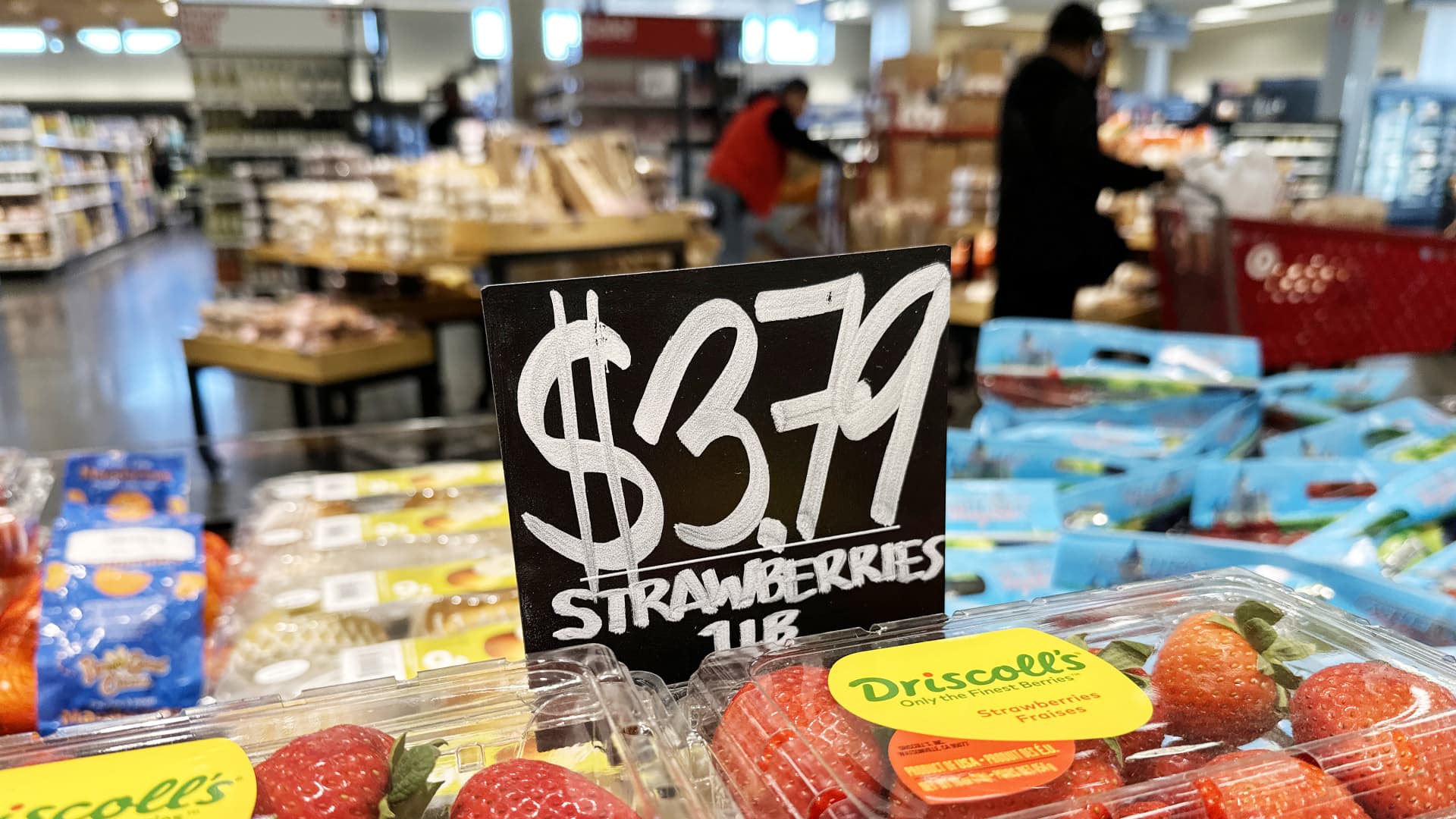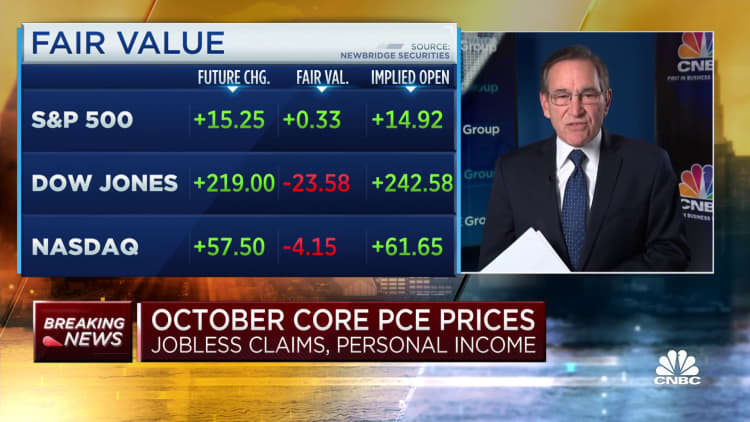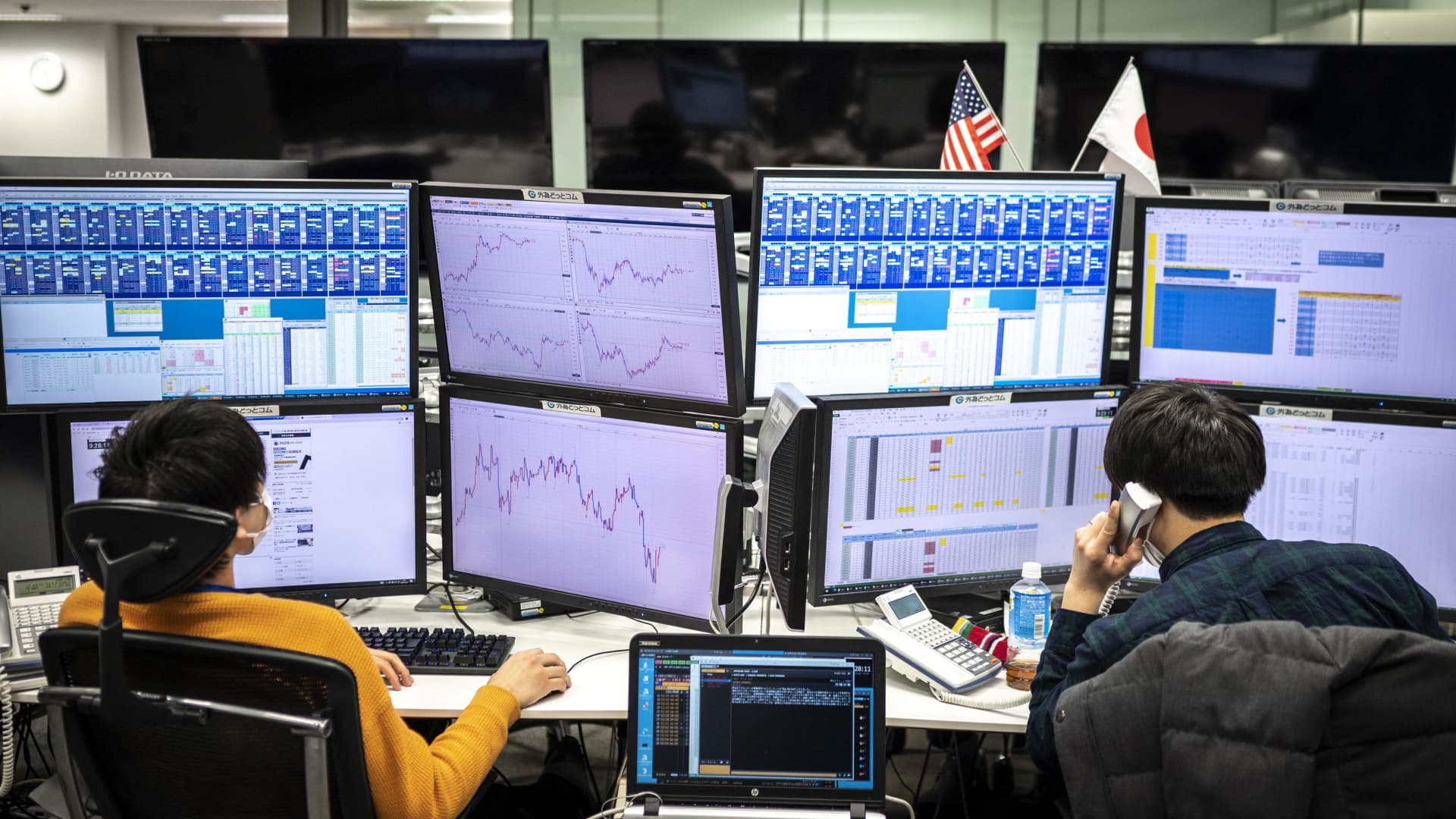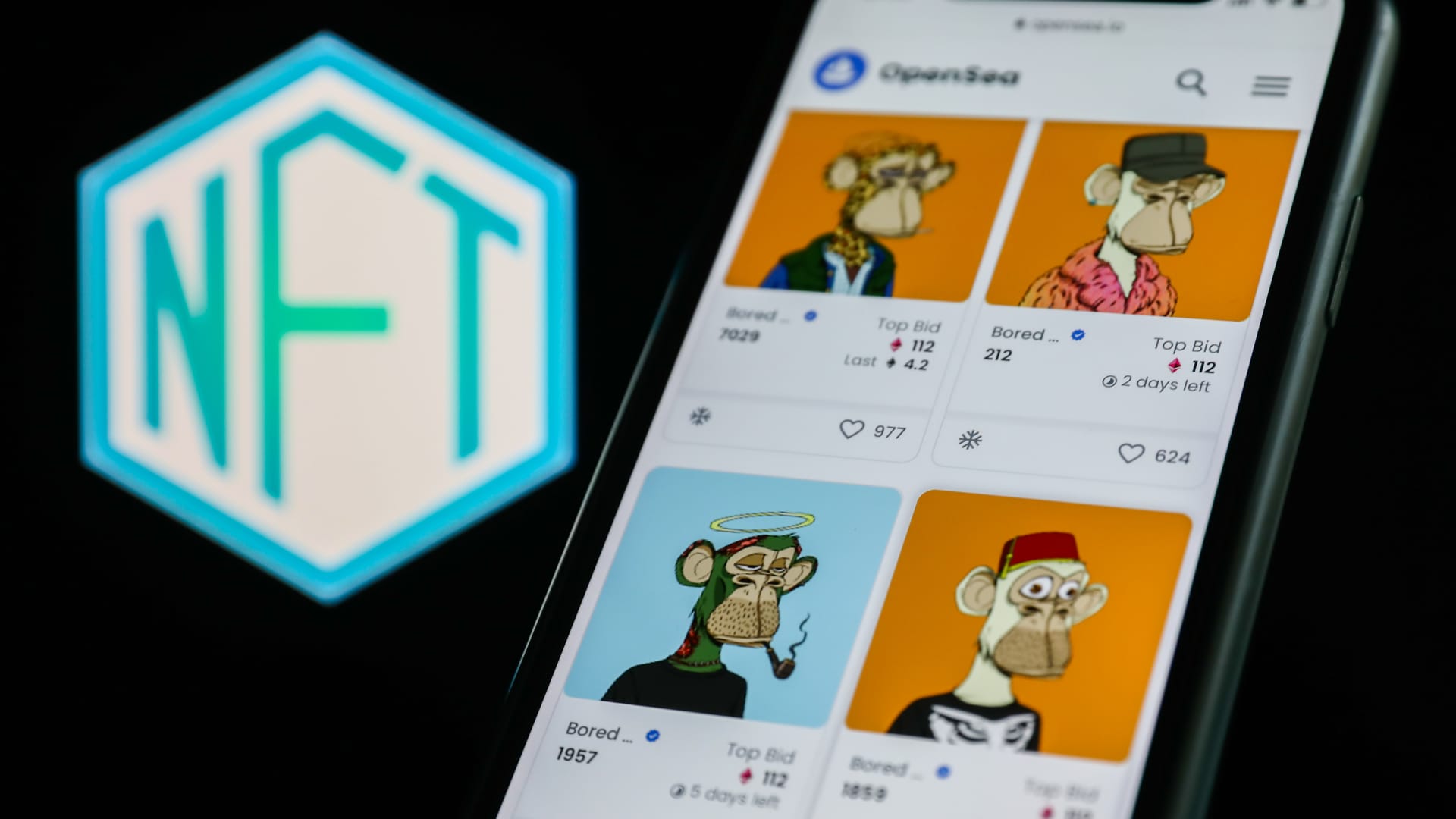Fed's favorite gauge shows inflation rose 0.2% in October and 3.5% from a year ago, as expected
The personal consumption expenditures price index was expected to increase 0.2% in October on a monthly basis and 3.5% from a year ago.


Inflation as measured by personal spending increased in line with expectations in October, possibly giving the Federal Reserve more incentive to hold rates steady and perhaps start cutting in 2024, according to a data release Thursday.
The personal consumption expenditures price index, excluding food and energy prices, rose 0.2% for the month and 3.5% on a year-over-year basis, the Commerce Department reported. Both numbers aligned with the Dow Jones consensus.
Headline inflation was flat on the month and at a 3% rate for the 12-month period, the release also showed. Energy prices fell 2.6% on the month, helping keep overall inflation in check, even as food prices increased 0.2%.
Goods prices saw a 0.3% decrease while services rose 0.2%. On the services side, the biggest gainers were international travel, health care and food services and accommodations. In goods, gasoline led the gainers.
Personal income and spending both rose 0.2% on the month, also meeting estimates and indicating that consumers are keeping pace with inflation.
While the public more closely watches the Labor Department's consumer price index as an inflation measure, the Fed prefers the core PCE reading. The former measure primarily looks at what goods and services cost, while the latter focuses on what people actually spend, adjusting for consumer behavior when prices fluctuate.
In other economic news Thursday, weekly jobless claims rose to 218,000, an increase of 7,000 from the previous period though slightly below the 220,000 estimate. However, continuing claims, which run a week behind, surged to 1.93 million, an increase of 86,000 and the highest level since Nov. 27, 2021, the Labor Department said.
Markets already had been pricing in the likelihood that the Fed is done raising interest rates this cycle, and the PCE reading, along with signs of a loosening labor market, could solidify that stance. Along with the anticipation that the rate hikes are over, markets also are pricing in the equivalent of five quarter percentage point rate cuts in 2024.
The fed funds rate, the central bank's benchmark level for short-term lending, is targeted in a range between 5.25%-5.5%, its highest in more than 22 years. After implementing 11 hikes since March 2022, the Fed skipped its last two meetings, and most policymakers of late have been indicating that they are content now to watch the impact of the previous increases work their way through the economy.
Other economic signals lately have shown the economy to be in fairly good shape, though several Fed officials recently have said the data doesn't square with comments they are hearing on the ground.
"I'm hearing consumers slowing down," Richmond Fed President Thomas Barkin said Wednesday at the CNBC CFO Council Summit. "I'm not hearing [the] consumer falling off the table. I'm hearing normalizing, not recession, but I am hearing consumer slowing down."
The Fed's inflation report comes the same day as encouraging news from the euro zone.
Headline inflation there fell to 2.4% on a 12-month basis, though core, which excludes food, energy and tobacco, was still at 3.6%. Like the Fed, the European Central Bank targets 2% as a healthy inflation level.
Don't miss these stories from CNBC PRO:
The S&P 500 is starting to form a 'cup and handle' pattern. How to watch for the potential breakout aheadBank of America sees the S&P 500 rising to 5,000 next year, anticipates a 'stock picker's paradise'Morgan Stanley is bullish on this emerging AI trend — and names 6 stocks to play itThese are Wall Street's favorite Warren Buffett stocks
 ShanonG
ShanonG 































